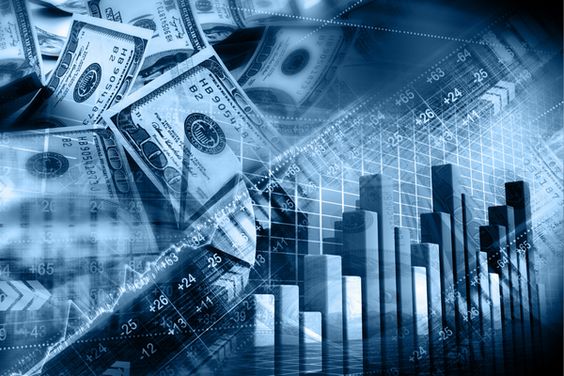Decoding the USD: History, uses & global influence
The United States Dollar (USD) is not only the official currency of the United States; it is also a vital part of the global economy. Because of its stability and widespread use, the USD is very important in world trade and finance. This article looks at the long history, global importance, and key features of the USD, giving you a good understanding of why it’s the world’s most important currency.

Definition
The USD, or United States Dollar, is the official currency of the United States and one of the most influential currencies worldwide. Often symbolized as $, it’s widely used in global trade and finance. The USD serves as the world’s primary reserve currency, meaning many countries hold significant amounts of USD for international transactions and investments.
Banknotes and coin denominations of the USD
The USD is issued in various denominations, including both banknotes and coins. Common banknote denominations include $1, $5, $10, $20, $50, and $100, while coins range from pennies (1 cent) to quarters (25 cents), half dollars (50 cents), and dollar coins.
Production, design, and circulation
The Bureau of Engraving and Printing handles the production of USD banknotes, while the U.S. Mint produces coins. Each note and coin undergoes meticulous design processes to include security features that prevent counterfeiting.
The designs also reflect significant figures and symbols from American history. Once produced, these currencies are circulated through the Federal Reserve, which distributes them to banks across the nation.
The careful management of currency production and circulation ensures that the USD remains a trusted and widely accepted medium of exchange both domestically and internationally.
Usage in U.S. territories and international acceptance
The USD is not only the official currency of the United States but is also used in several U.S. territories, including Puerto Rico, Guam, and the U.S. Virgin Islands. Additionally, several countries, like Ecuador and El Salvador, have adopted the USD as their official currency. Many other nations use it alongside their local currencies for large transactions and savings, highlighting its international acceptance and trust.

Historical background of the USD
These historical developments have shaped the USD into the robust and reliable currency it is today, deeply intertwined with the global economy.
Origins and early usage
The origins of the USD date back to the late 18th century, following the American Revolutionary War. The Coinage Act of 1792 established the dollar as the standard unit of money in the U.S., creating a stable and reliable currency system. This act laid the foundation for the new nation’s unified and regulated monetary system.
Introduction of greenbacks and legal tender status
In the mid-19th century, the U.S. introduced greenbacks—paper currency issued during the Civil War to finance the war effort. These greenbacks were later made legal tender, meaning they had to be accepted for all debts, public and private. This marked a significant shift in the U.S. monetary system, ensuring the paper currency was widely accepted and trusted.
Role of the Federal Reserve
The establishment of the Federal Reserve in 1913 further solidified the USD’s position. The Federal Reserve System was created to provide a safer, more flexible, and stable monetary and financial system. It manages the nation’s money supply and aims to ensure economic stability, which is crucial in controlling inflation and stabilizing the currency. The Federal Reserve’s actions have been pivotal in maintaining the strength and reliability of the USD over the decades.
What does USD mean in global finance?
USD, or the United States Dollar, is the official currency of the United States and several other nations. Globally recognized as a primary reserve currency, it plays a crucial role in international trade and finance.
As a fiat currency, the US dollar is not backed by physical commodities like gold. Its value is instead driven by supply and demand in the foreign exchange market.
The US dollar is widely used for various financial activities, including purchasing goods and services, investing, and paying taxes. Many central banks also hold it as a reserve currency to stabilise their own economies.
While USD’s meaning as a currency is straightforward, its influence on the global economy is complex and profound. Understanding its history and role is essential for anyone interested in global finance and investing.
The USD and the gold standard
Initially, the USD was linked to gold, meaning each dollar could be exchanged for a specific amount of gold. This linkage provided a stable value for the currency. However, during the Great Depression, the USD was devalued to combat economic woes, reducing the amount of gold it could be exchanged for.
End of the gold standard and its implications
Under President Nixon, the U.S. completely abandoned the gold standard in 1971, transitioning to a fiat currency system where the USD’s value is not based on physical commodities but on government regulation. This shift allowed for greater flexibility in monetary policy but also introduced new challenges in managing inflation and currency stability.
Measuring the value of the USD via U.S. Dollar Index
The U.S. Dollar Index (USDX) is a crucial metric that gauges the value of the USD against a basket of six major world currencies, including the euro, yen, and pound. It provides a comprehensive view of the USD’s strength and is widely used by traders and analysts to assess economic trends and make informed decisions.
Money supply metrics and their importance
Money supply metrics, such as M1 and M2, track the amount of currency in circulation and deposits in the economy. These metrics are essential for understanding inflationary pressures and economic health. A higher money supply can indicate economic growth but may also lead to inflation if not managed properly. These measurements help the Federal Reserve shape monetary policy and ensure financial stability.
Advantages and stability of the USD
The following factors combine to make the USD a cornerstone of the global financial system, providing a stable foundation for international trade and investment:
Factors supporting its stability
The strength of the U.S. economy, robust financial markets, and the central role of the Federal Reserve supports the USD’s stability. The U.S. government’s creditworthiness and the depth and liquidity of U.S. financial markets make the USD a safe haven for investors during times of economic uncertainty.
Role in international trade and finance
The USD’s role in international trade and finance is unparalleled. It is the preferred currency for trade invoices and settlements, reducing transaction costs and exchange rate risks for businesses engaged in international trade. This widespread use further reinforces the USD’s stability, as global demand for the currency remains high.
The dominance of USD in global trade
The USD holds a dominant position in global trade and finance, being the most commonly used currency for international transactions. It’s the primary currency for commodities trading, such as oil, gold, and other raw materials, which are often priced in dollars. This widespread use ensures that the USD is in constant demand, reinforcing its stability and importance.
Petrodollars and the global oil market
Petrodollars refer to the USD earned by oil-exporting countries through the sale of oil. Since oil prices are denominated in USD, countries involved in the oil trade accumulate large currency reserves. This practice strengthens the USD’s position in the global economy and reinforces its demand.
Other significant uses in global finance
Beyond the oil market, the USD is pivotal in global finance. It is the primary currency for international loans, trade invoices, and foreign exchange reserves. Due to its stability and reliability, many countries prefer to hold USD as part of their foreign exchange reserves. Additionally, the USD is often used for large-scale international transactions, further highlighting its central role in global economic activities.
What are the benefits and costs of a dominant USD for the United States?
The U.S. benefits immensely from a dominant USD, often described as an “exorbitant privilege.” This dominance allows the U.S. government and American consumers to borrow at lower costs. Since much of the world holds U.S. dollars, global demand for the currency lowers interest rates, reducing debt service costs.
It also enables the U.S. to borrow more than would otherwise be feasible, sustaining higher levels of investment and spending. For American consumers, a strong USD reduces the cost of imports by making foreign goods cheaper through favourable exchange rates, making a wide variety of affordable goods readily available.
The dollar’s status as the world’s primary reserve currency provides significant financial stability for the U.S. In times of economic uncertainty, global investors turn to the USD, reinforcing its value and minimizing the likelihood of a currency crisis. Such stability helps to ensure that sudden devaluations, which could disrupt imports and worsen the terms of trade, are far less likely.
However, the dominance of the USD has a two-sided effect, making other countries more sensitive to changes in U.S. financial conditions, often impacting their economies. Additionally, as the preferred global currency, the USD gives the U.S. powerful influence over international finance. This reach allows the U.S. to implement financial sanctions effectively, limiting or controlling other nations’ access to dollar-denominated assets and transactions in ways that reinforce foreign policy goals.
Consequently, the U.S. often experiences higher trade deficits, as it must import more to counterbalance the surpluses of other nations. This process can increase American indebtedness and cause economic imbalances, especially when excess global savings are funneled into U.S. assets, leading to dependency on foreign capital inflows.
Additionally, strong foreign demand for the USD can create upward pressure on the dollar’s value, making U.S. exports less competitive globally by raising prices for foreign buyers.
How is the USD used abroad?
The USD plays a crucial role in the global economy through reserves, borrowing, payments, and trade.
Reserves:
Governments and central banks worldwide hold USD assets, primarily U.S. Treasury debt, as reserves to stabilize their currencies and manage economic shocks. About 59% of global foreign currency reserves are in USD, with the euro holding the next largest share at 20%.
Borrowing:
Many foreign governments and corporations choose to borrow in USD to protect their creditors against exchange rate fluctuations. Approximately 64% of international debt is USD-denominated.
Payments:
The USD dominates international payments, accounting for 58% of transactions outside the eurozone and a significant share in foreign exchange markets.
Trade:
The USD is heavily used in global trade, featuring in around 54% of foreign trade invoices worldwide.
The USD’s influence spans foreign exchange reserves, international debt, loans, payments, trade invoices, and exchange markets, positioning it as the primary currency in the global economy alongside the euro, British pound, Japanese yen, and Chinese renminbi.

Summing up – the importance of USD in the global economy
The USD’s significance extends beyond American borders, influencing global markets, economies, and trade practices. It is known for its stability and reliability, making it the preferred currency for international transactions, lending, and reserves. This broad acceptance underscores the USD’s critical role in the global financial system.
FAQs
Why is USD famous?
The USD is famous due to its dominant role in global trade and finance. It is the world’s primary reserve currency, held in significant amounts by central banks around the globe. The stability of the U.S. economy and the trust in its financial system also contribute to the USD’s fame.
Why is USD used everywhere?
The USD is used everywhere because it is stable, widely accepted, and backed by a robust economy. Its role in international trade, particularly in commodities like oil, reinforces its global presence. Additionally, many countries use the USD alongside their own currencies to stabilize their economies and facilitate trade.
How much USD is in circulation?
There are trillions of USD in circulation globally, including both physical currency and digital money. The Federal Reserve manages the supply to ensure economic stability and control inflation.
What is the exchange rate between the USD and the Euro?
The current exchange rate between the USD and the Euro is approximately 1 USD = 0.9251 EUR as of mid-July 2024. This rate fluctuates based on various economic conditions, interest rates, and geopolitical factors, making it a critical metric for traders and policymakers to monitor closely.
What are USDCoin and stablecoins?
USDCoin (USDC) is a type of stablecoin pegged to the USD, providing a digital currency option that maintains a stable value. Stablecoins like USDC are used for transactions in the digital economy and offer a bridge between traditional finance and cryptocurrency markets.


